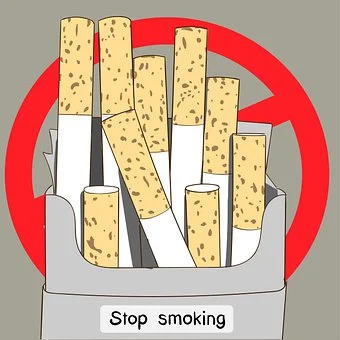How To Quit Smoking
Smoking is one of the leading causes of preventable deaths worldwide. It is responsible for a wide range of health problems such as lung cancer, heart disease, and stroke. If you're a smoker, quitting smoking is one of the best things you can do for your health. Quitting smoking is not easy, but it is possible. In this blog, we'll discuss some effective ways to quit smoking and lead a healthier life.
Find your motivation: The first step towards quitting smoking is finding your motivation. Think about the reasons why you want to quit smoking. Do you want to improve your health? Do you want to save money? Do you want to set a good example for your children? Whatever your reason may be, write it down and keep it with you as a reminder.
Set a quit date: Once you have found your motivation, set a quit date. Choose a day that is meaningful to you, such as your birthday or anniversary. Make sure you have enough time to prepare for your quit date.
Get support: Quitting smoking is easier when you have support. Tell your family and friends about your decision to quit smoking. They can provide you with the encouragement and support you need to quit smoking. You can also join a support group or talk to a counselor to help you through the quitting process.
Identify your triggers: Identify the things that trigger your urge to smoke, such as stress, alcohol, or being around other smokers. Once you know your triggers, you can avoid them or find ways to cope with them without smoking.
Find a healthy alternative: When you quit smoking, you may experience withdrawal symptoms such as anxiety, irritability, and cravings. Finding a healthy alternative can help you cope with these symptoms. You can try chewing gum, eating healthy snacks, or doing some physical activity.
Use nicotine replacement therapy: Nicotine replacement therapy (NRT) can help reduce the cravings and withdrawal symptoms associated with quitting smoking. NRT products such as nicotine gum, patches, and lozenges can be bought over the counter.
Seek medication assistance: There are also prescription medications available that can help you quit smoking. These medications work by reducing the cravings and withdrawal symptoms associated with quitting smoking. Talk to your healthcare provider to find out if prescription medication is right for you.
Change your routine: Smoking is often associated with certain routines or habits, such as smoking after meals or during breaks at work. Changing your routine can help break these associations and reduce the urge to smoke. You can try taking a different route to work, going for a walk after meals, or drinking tea instead of coffee.
Stay active: Physical activity can help reduce stress and anxiety, which are common triggers for smoking. It can also help distract you from the urge to smoke. Aim for at least 30 minutes of physical activity every day.
Stay positive: Quitting smoking is a process, and it may take time to succeed. Don't be discouraged if you slip up and have a cigarette. Instead, focus on the progress you've made and continue to work towards your goal of quitting smoking.
Quitting smoking is a difficult but achievable goal. Finding your motivation, setting a quit date, getting support, identifying your triggers, finding a healthy alternative, using nicotine replacement therapy or medication assistance, changing your routine, staying active, and staying positive are all effective ways to quit smoking. Remember, quitting smoking is one of the best things you can do for your health, and it is never too late to quit.






Comments
Post a Comment